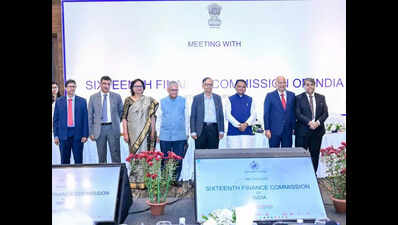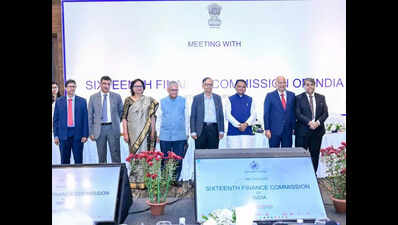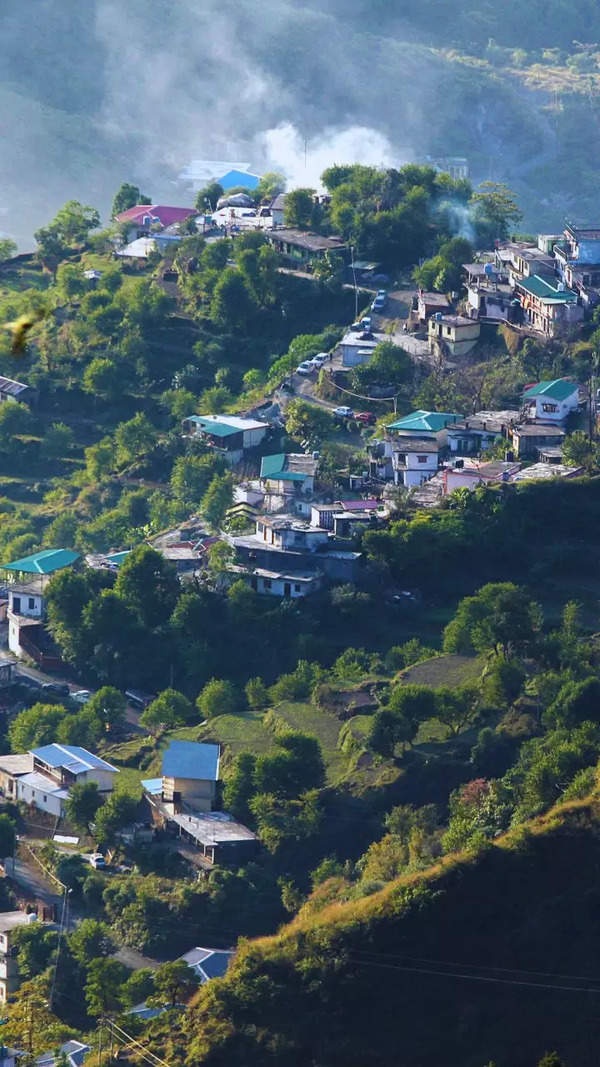- News
- City News
- bhubaneswar News
- Govt seeks Rs 12.59L-cr from finance panel for 2026-31 period
Trending
Govt seeks Rs 12.59L-cr from finance panel for 2026-31 period
Bhubaneswar: Odisha govt has sought Rs 12,59,148 crore from the 16th Finance Commission for the 2026-2031 period, while also urging the panel to increase the state's share in central tax to 50% from the existing 41%.
Placing the demands, the govt highlighted that the funds are aimed at steering the state's roadmap towards a ‘Samruddha Odisha by 2036', aligning with the long-term vision for economic growth and infrastructure development.
Chief minister Mohan Charan Majhi presented the state's wish list during a meeting with members of the 16th Finance Commission, headed by chairman Arvind Panagariya.
The previous BJD govt had demanded Rs 8.24 lakh crore from the 15th Finance Commission for the years 2021-2026, of which the panel had recommended Rs 2.22 lakh crore.
Elaborating on the demands, Majhi said the state sought Rs 9,88,422 crore to make up for the pre-devolution revenue deficit; Rs 1,10,434 crore for state-specific needs; Rs 1,00,036 crore as grants to local bodies; Rs 31,004 crore for disaster response and Rs 29,252 crore for disaster mitigation.
Calling Odisha a disaster-prone state, the chief minister urged the commission to make the state disaster response fund (SDRF) fully funded by the Centre, instead of the existing 75:25 Centre-state ratio.
The state govt also urged the Centre to increase its share in the gross tax revenue from the existing 4.528% to 4.964% and emphasised the need for higher grants to local bodies. Majhi suggested that the commission should allocate 2% of the projected gross revenue receipts of the Union for the 2026-31 period to rural and urban local bodies.
"Apart from the above, the commission may recommend grants for specific purpose transfers for health, water supply and sanitation, and old age security," Majhi said.
Panagariya said the Odisha govt has also demanded that the cess and surcharges collected by the Centre should go to the divisible pool, which is distributed between the Centre and states.
While praising Odisha for its fiscal discipline, Panagariya said the fund allocation would be based on various criteria, including 45% for income-distance, which measures how far a state's per capita income is from the highest per capita income among the states. A higher allocation is given to states with lower income to bridge the gap.
Similarly, 15% is allocated for economically and socially disadvantaged populations, 5% for higher population density to manage infrastructure and public services, 15% for fiscal discipline, 10% for forest cover and ecology, and 10% for demography, considering factors like age distribution, migration patterns, and workforce availability.
Asked about special category status for Odisha, Panagariya said this does not come under the purview of the finance commission.
Check out the latest news about Delhi Elections 2025, including key constituencies such as New Delhi, Kalkaji, Jangpura, Patparganj, Rohini, Chandni Chowk, Rajinder Nagar, Greater Kailash, Okhla, and Dwarka.
End of Article
FOLLOW US ON SOCIAL MEDIA
Visual Stories
Hot Picks
TOP TRENDING
Explore Every Corner
Across The Globe












